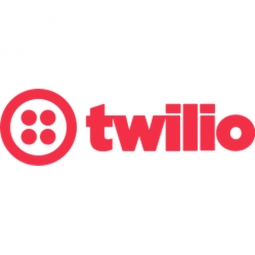Technology Category
- Infrastructure as a Service (IaaS) - Cloud Databases
- Sensors - Level Sensors
Applicable Industries
- Cement
- Finance & Insurance
Use Cases
- Time Sensitive Networking
About The Customer
contactSPACE is a cloud-based contact centre software solution provider based in Australia. The company was founded by Dave O’Leary 15 years ago with a mission to fix many contact centre issues. In 2015, he was able to create a contact centre software solution that needed zero tech people to build and implement. Using their contact strategies – a combination of their own data and data they’re able to capture from their customers, their cloud-based software solution supports a large and wide variety of verticals, with a strong footprint in non-profit organisations.
The Challenge
contactSPACE, a cloud-based contact centre software solution provider, faced a significant challenge when they acquired a customer based in New York. Their homegrown voice stack/API was not equipped to support this customer without investing in expensive additional infrastructure. The company, which was born inside AWS (Amazon Web Services) and is based in Australia, needed to provide the same high-quality service to their American customers as they did to their Australian ones. The challenge was to find a solution that could be deployed quickly and efficiently, without compromising on quality or requiring significant investment in infrastructure.
The Solution
contactSPACE turned to Twilio for Elastic SIP Trunking, a global PSTN (public switch telephone network) connectivity for voice-over-IP solution. Twilio’s Elastic SIP Trunking is deployable in more than 100 countries and can have a contact centre set up within minutes. In less than one hour, contactSPACE was able to set up their New York-based customer with zero quality issues. Additionally, contactSPACE offers organisations a plugin for Twilio Flex that enables them to build end-to-end contact centres with their 4flex.io product offering. Twilio Flex is a programmable contact centre solution that allows companies like contactSPACE to provide their customers with a software plugin that helps Flex customers make efficient, compliant, outbound contact.
Operational Impact
Quantitative Benefit

Case Study missing?
Start adding your own!
Register with your work email and create a new case study profile for your business.
Related Case Studies.

Case Study
System 800xA at Indian Cement Plants
Chettinad Cement recognized that further efficiencies could be achieved in its cement manufacturing process. It looked to investing in comprehensive operational and control technologies to manage and derive productivity and energy efficiency gains from the assets on Line 2, their second plant in India.

Case Study
Real-time In-vehicle Monitoring
The telematic solution provides this vital premium-adjusting information. The solution also helps detect and deter vehicle or trailer theft – as soon as a theft occurs, monitoring personnel can alert the appropriate authorities, providing an exact location.“With more and more insurance companies and major fleet operators interested in monitoring driver behaviour on the grounds of road safety, efficient logistics and costs, the market for this type of device and associated e-business services is growing rapidly within Italy and the rest of Europe,” says Franco.“The insurance companies are especially interested in the pay-per-use and pay-as-you-drive applications while other organisations employ the technology for road user charging.”“One million vehicles in Italy currently carry such devices and forecasts indicate that the European market will increase tenfold by 2014.However, for our technology to work effectively, we needed a highly reliable wireless data network to carry the information between the vehicles and monitoring stations.”

Case Study
Safety First with Folksam
The competitiveness of the car insurance market is driving UBI growth as a means for insurance companies to differentiate their customer propositions as well as improving operational efficiency. An insurance model - usage-based insurance ("UBI") - offers possibilities for insurers to do more efficient market segmentation and accurate risk assessment and pricing. Insurers require an IoT solution for the purpose of data collection and performance analysis

Case Study
Smooth Transition to Energy Savings
The building was equipped with four end-of-life Trane water cooled chillers, located in the basement. Johnson Controls installed four York water cooled centrifugal chillers with unit mounted variable speed drives and a total installed cooling capacity of 6,8 MW. Each chiller has a capacity of 1,6 MW (variable to 1.9MW depending upon condenser water temperatures). Johnson Controls needed to design the equipment in such way that it would fit the dimensional constraints of the existing plant area and plant access route but also the specific performance requirements of the client. Morgan Stanley required the chiller plant to match the building load profile, turn down to match the low load requirement when needed and provide an improvement in the Energy Efficiency Ratio across the entire operating range. Other requirements were a reduction in the chiller noise level to improve the working environment in the plant room and a wide operating envelope coupled with intelligent controls to allow possible variation in both flow rate and temperature. The latter was needed to leverage increased capacity from a reduced number of machines during the different installation phases and allow future enhancement to a variable primary flow system.

Case Study
Automated Pallet Labeling Solution for SPR Packaging
SPR Packaging, an American supplier of packaging solutions, was in search of an automated pallet labeling solution that could meet their immediate and future needs. They aimed to equip their lines with automatic printer applicators, but also required a solution that could interface with their accounting software. The challenge was to find a system that could read a 2D code on pallets at the stretch wrapper, track the pallet, and flag any pallets with unread barcodes for inspection. The pallets could be single or double stacked, and the system needed to be able to differentiate between the two. SPR Packaging sought a system integrator with extensive experience in advanced printing and tracking solutions to provide a complete traceability system.




